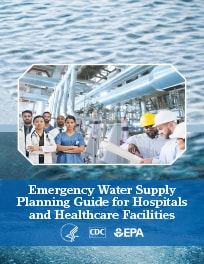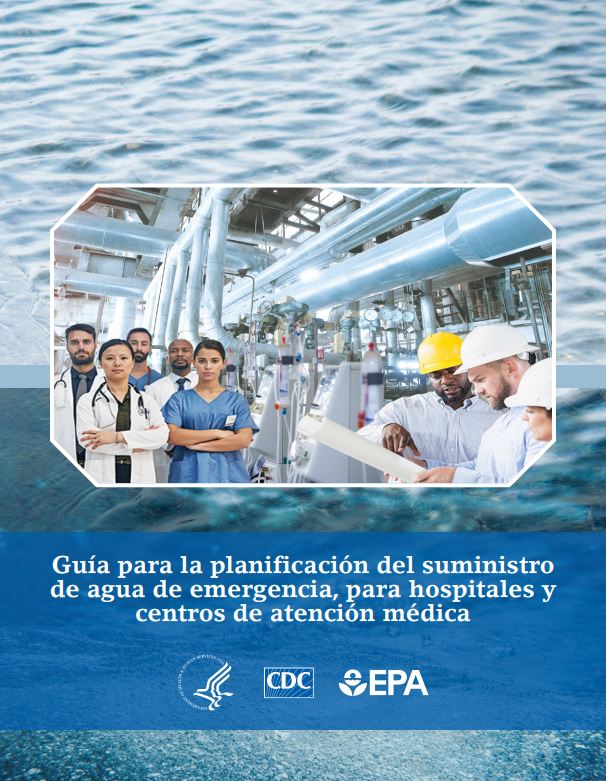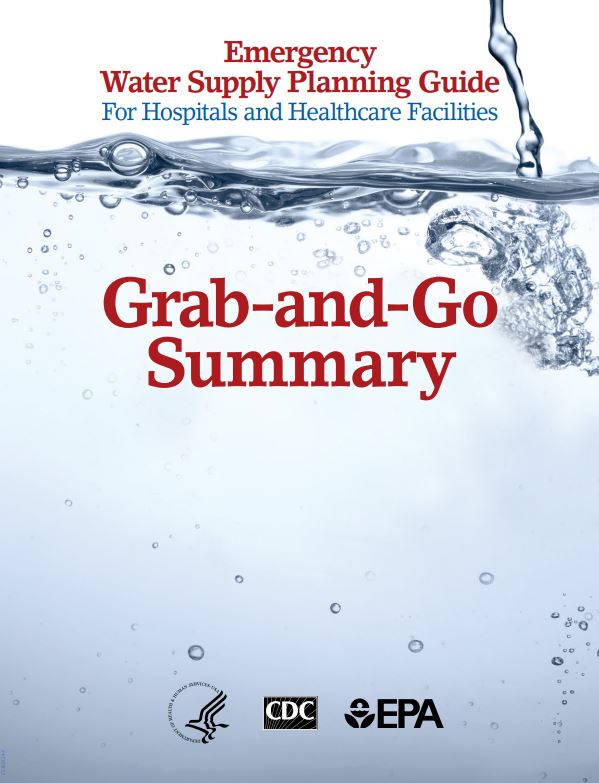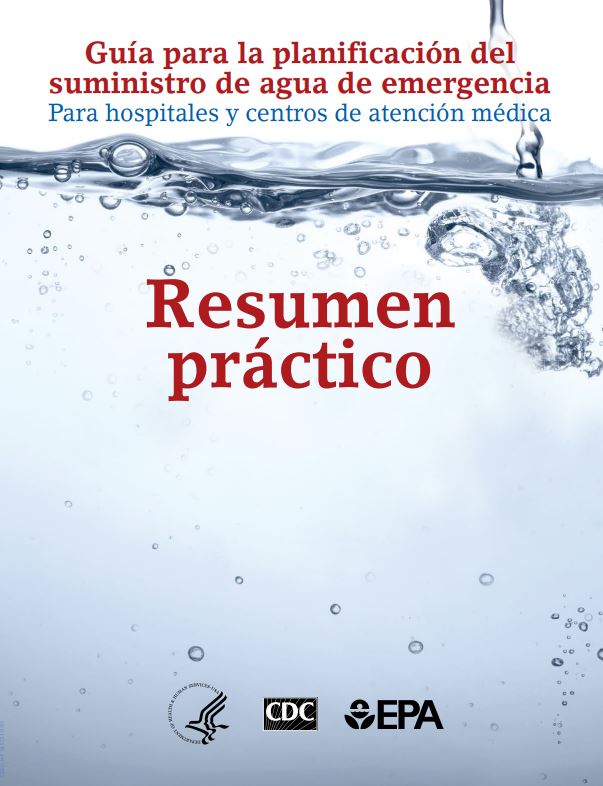What to know
This 2019 revised guide provides a road map for healthcare facilities to prepare for, respond to, and recover from a total or partial water supply interruption. It provides guidance to assess water usage, response capabilities, and water supply alternatives.
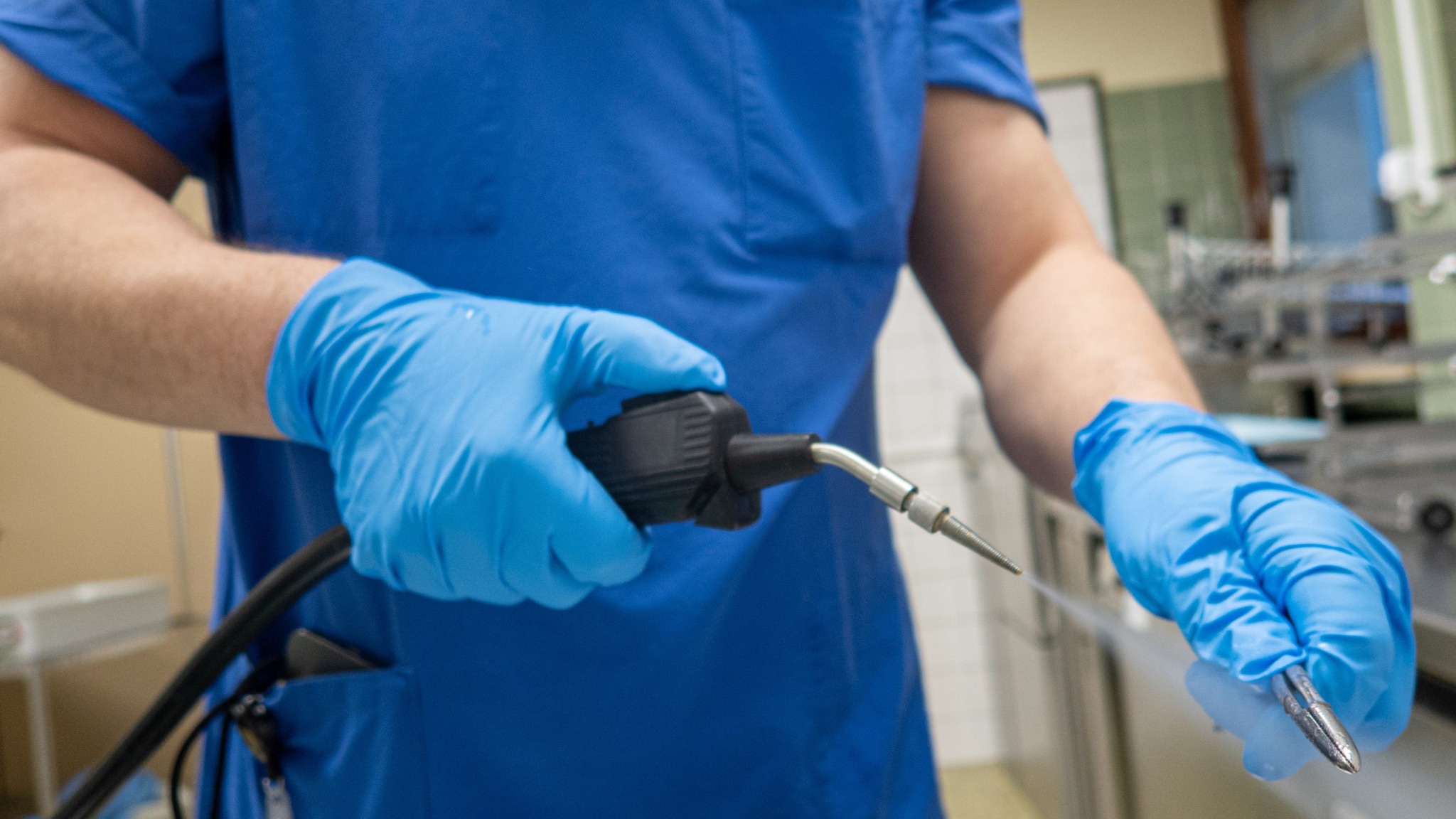
About this guide
During water system interruptions, the operation of healthcare facilities is severely interrupted and capability can be almost completely degraded within two hours. In order to maintain daily operations and patient care services, healthcare facilities need to develop a water supply plan in advance of an emergency. Several types of events such as a natural disaster, a failure of the community water system, construction damage, or even an act of terrorism can cause water supply interruption. Because water supplies can and do fail, it is imperative to understand and address how patient safety, quality of care, and the operations of your facility will be impacted.
The planning guide was published as a collaborative effort between CDC, the Environmental Protection Agency (EPA) and the American Water Works Association (AWWA).

